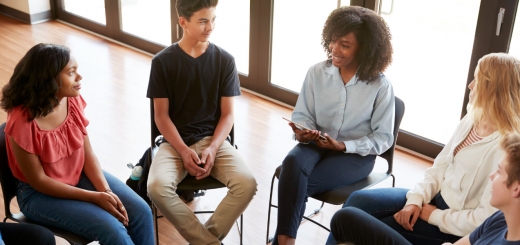Special education students need a whole child approach
In early 2020, 7.3 million students received special education services as required by the Individuals with Disabilities Education Act (IDEA), according to the National Center for Education Statistics. That’s 14% of K–12 students in public schools in the United States who depend on additional—and often very specialized—services to support their ability to learn and live their lives fully.
But once the pandemic set in and schools closed their doors, the elaborately precarious systems that have been constructed to meet the needs of these students collapsed.
In October 2020, a little more than two- thirds of K-12 principals estimated that their students with disabilities would perform somewhat or much lower than they had before the pandemic. A year later, a November 2021 survey by the Council of Parent Attorneys and Advocates—an advocacy group for students in special education and their families—found that 86% of parents reported that their child experienced learning loss, skill regression or slower-than-expected progress in school.
The predictability of our current situation is tragic. But to blame this entirely on the pandemic is a mistake. Even before the pandemic hit, there were signs that serious trouble was brewing for students with disabilities. COVID only exacerbated a looming problem.
As districts emerge from the pandemic, how can school leaders ensure they are rebuilding and reimagining an educational experience that ensures special education students have access to equitable outcomes? A whole-child approach to special education will help accelerate the learning of this unique population.
A Whole-Child Approach for Every Child
Too often, students in special education are marginalized and lack access to the supports they need to develop academically, let alone as full human beings.
Our goal should be to ensure students leave school literate and passionate, with access to a full life and knowledge of their true selves. When a student comes to us, we should work to understand that whole child, beginning with where they’re coming from, what they need, and what they hope to accomplish. An IEP is generally a helpful document if you want to understand a student’s learning needs. But we need to get to a place where we look beyond the IEP; to help that child articulate who they are and what they aspire to be.
Building Community Around Each Student
At Ulster, we have designed our services around the belief that the student must be at the center of their educational experience. We accomplish this with the help of a staff trained to understand that they are all individual members of a community around each student. First we ask what the student is bringing to our school and think about what wraparound services that individual child will need. Then we ask: Who are the adults who will be interacting with them daily?
There may be nearly a dozen adults affecting one student’s life every day when they are in the school building, including their teacher, a teaching assistant and/or an aid, a physical therapist, a speech counselor, or social worker, to mention a few others. If that student is experiencing a crisis, we may call in our positive intervention team (or PIT crew), an administrator, or even someone from the community outside our school or their family, because our instructional model allows for unique, or “nontraditional” systems of support.
(see all)



